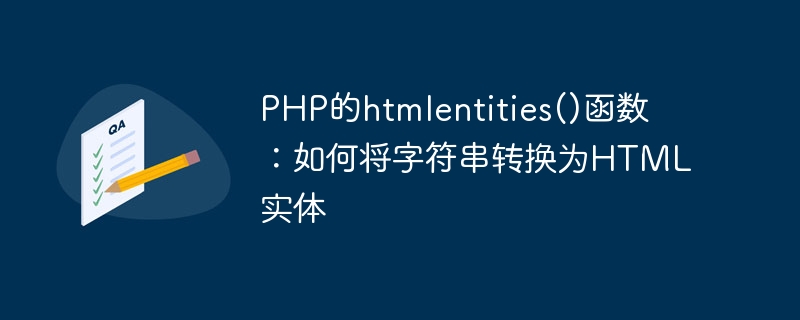

在Web开发过程中,我们经常需要将字符串中的特殊字符转换为HTML实体,以避免在HTML中出现错误或者安全问题。在PHP中,我们可以使用htmlentities()函数来实现这个功能。
htmlentities()函数的基本语法如下:
string htmlentities ( string $string [, int $flags = ENT_COMPAT | ENT_HTML401 [, string $encoding = ini_get('default_charset') [, bool $double_encode = true ]]] )该函数接受一个字符串作为参数,并返回一个转义后的字符串。除了第一个必选参数,它还有三个可选参数:
接下来,我们通过一些代码示例来演示htmlentities()的用法。
$string = "Hello, World!"; echo htmlentities($string); // 输出:Hello, World!
在这个简单的示例中,我们只是将一个普通字符串传递给htmlentities()函数进行转义。由于该字符串中没有任何需要转义的字符,所以原样输出。
$string = "I'm happy!"; echo htmlentities($string); // 输出:I'm happy!
在这个示例中,我们将一个包含单引号的字符串传递给htmlentities()函数进行转义。默认情况下,该函数只转义双引号,所以单引号不会被转义。输出的结果与原字符串相同。
$string = 'I "love" you!'; echo htmlentities($string); // 输出:I "love" you!
在这个示例中,我们使用了双引号来定义字符串,并同时包含了一个双引号。当传递给htmlentities()函数进行转义时,它会将双引号转义为",以避免在HTML中出现问题。结果表明,原始字符串中的双引号已被成功地转义。
$string = '<script>alert("Hello, World!");</script>';
echo htmlentities($string);
// 输出:<script>alert("Hello, World!");</script>在这个示例中,我们将一个包含JavaScript代码的字符串传递给htmlentities()函数进行转义。由于该字符串中包含了HTML标签和双引号,所以它们都被转义为相应的实体。这可以防止在HTML中注入恶意代码。
总之,htmlentities()函数是PHP中非常实用的一个函数,可以帮助我们将字符串中的特殊字符转换为HTML实体,以保证应用程序的安全性和稳定性。我们可以根据需要调整函数的参数,以满足特定的要求。
The above is the detailed content of PHP's htmlentities() function: How to convert a string into HTML entities. For more information, please follow other related articles on the PHP Chinese website!